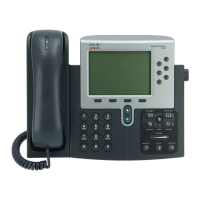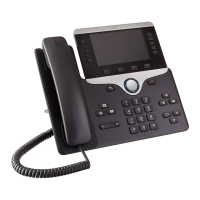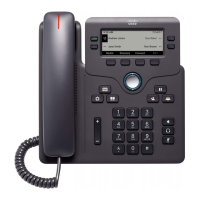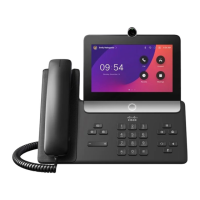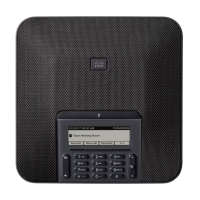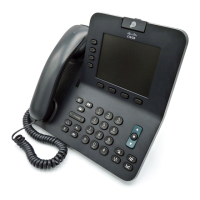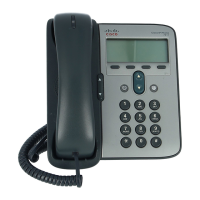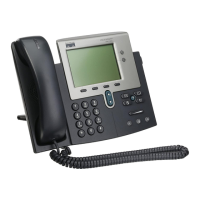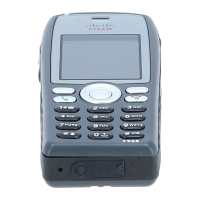B-15
Cisco SIP IP Phone Administrator Guide
Appendix B SIP Call Flows
Call Flow Scenarios for Successful Calls
Step Action Description
1. INVITE—Cisco SIP IP phone A
to Cisco SIP IP phone B
Cisco SIP IP phone A sends a SIP INVITE request to Cisco SIP IP phone B. The
INVITE request is an invitation to User B to participate in a call session.
In the INVITE request:
• The phone number of User B is inserted in the Request-URI field in the form
of a SIP URL. The SIP URL identifies the address of User B and takes a form
similar to an e-mail address (user@host, where user is the telephone number
and host is either a domain name or a numeric network address). For
example, the Request-URI field in the INVITE request to User B appears as
“INVITE sip:555-0002@companyb.com; user=phone.” The “user=phone”
parameter distinquishes that the Request-URI address is a telephone number
rather than a username.
• Cisco SIP IP phone A is identified as the call session initiator in the From
field.
• A unique numeric identifier is assigned to the call and is inserted in the
Call-ID field.
• The transaction number within a single call leg is identified in the CSeq
field.
• The media capability User A is ready to receive is specified.
2. 180 Ringing—Cisco SIP IP
phone B to Cisco SIP IP phone A
Cisco SIP IP phone B sends a SIP 180 Ringing response to Cisco SIP IP phone A.
3. 200 OK—Cisco SIP IP phone B
to Cisco SIP IP phone A
Cisco SIP IP phone B sends a SIP 200 OK response to Cisco SIP IP phone A. The
200 OK response notifies Cisco SIP IP phone A that the connection has been
made.
If Cisco SIP IP phone B supports the media capability advertised in the INVITE
message sent by Cisco SIP IP phone A, it advertises the intersection of its own
and Cisco SIP IP phone A’s media capability in the 200 OK response. If
Cisco SIP IP phone B does not support the media capability advertised by
Cisco SIP IP phone A, it sends back a 400 Bad Request response with a 304
Warning header field.
4. ACK—Cisco SIP IP phone A to
Cisco SIP IP phone B
Cisco SIP IP phone A sends a SIP ACK to Cisco SIP IP phone B. The ACK
confirms that Cisco SIP IP phone A has received the 200 OK response from
Cisco SIP IP phone B.
The ACK might contain a message body with the final session description to be
used by Cisco SIP IP phone B. If the message body of the ACK is empty,
Cisco SIP IP phone B uses the session description in the INVITE request.
A two-way RTP channel is established between Cisco SIP IP phone A and Cisco SIP IP phone B.
5. INVITE—Cisco SIP IP phone C
to Cisco SIP IP phone B
Cisco SIP IP phone C sends a SIP INVITE request to Cisco SIP IP phone B. The
INVITE request is an invitation to User B to participate in a call session.
6. 180 Ringing—Cisco SIP IP
phone B to Cisco SIP IP phone C
Cisco SIP IP phone B sends a SIP 180 Ringing response to Cisco SIP IP phone C.
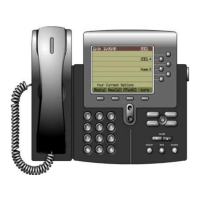
